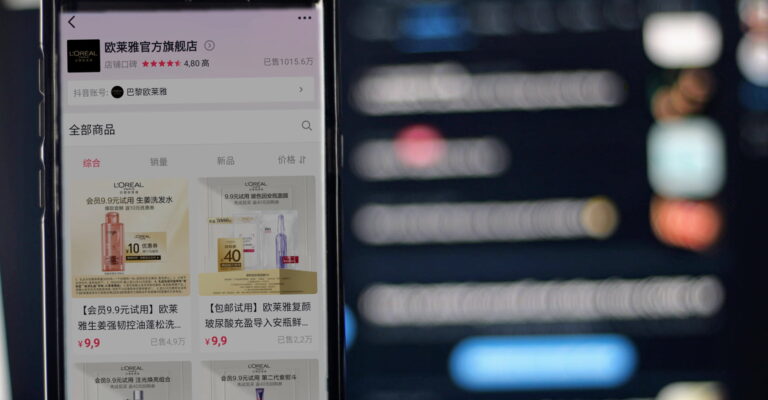Find here Daxue Talks episode 71. In this episode, Aurelien Rigart, Vice President and partner at IT Consultis, discusses the usage of chatbots for mini-programs and the mistake that companies do when developing a website in China.
Full transcript below:
Hello everyone, I’m Aurelien Rigart I’m the co-founder and Vice President of IT Consultis, I’m from France. I’ve been in China and started this adventure nine years ago. So, IT Consultis is a digital transformation company. It’s a team of 80 people in three countries, which are China, Singapore, and Vietnam. So, we’re helping Fortune 500 and fast scaling start-ups to work on their digital transformation. It can range from eCommerce, from building mini-programs, from building websites, App, integrating systems together, or overall work as a consultant on their digital transformation initiatives.
How do you implement chatbots on your mini-program, website, or platforms like Taobao or JD?
Yeah, chatbots for like 2-3 years they were an extremely hot topic. Some companies were actually specializing through chatbot’s and there was like – really the hot trend. Everybody needed chatbots and then like basically brands understood that chatbots were interesting but the more interesting topic at hand was marketing automation and in the future marketing automation, CRM and data management platform or customer management platform. That’s what makes sense as a whole ecosystem, understanding that we need to have a chatbot to reply as fast as possible in an official way to a customer to provide value it’s great, but people have for ages have tried to overkill it where most of the time when you’re talking with specific brands, you’re going to set up a chatbot and a chatbot from the human perspective makes a lot of sense and you’re going to have like a decision making tree where basically if the user is like from this gender or from this province or from this age, is going to have like a very particular segment and the question and the interaction that we’re going to do is going to be very specific in terms of adding something to the customer experience, but as who is trying to get data to improve as we go the customer experience. So, chatbots is a great way for tagging, segmenting and enhancing the customer experience and something that is starting to happen step by step is that social CRM is starting to be combined with like an overall global CRM and being built like as a customer data platform which is what market globally they are looking for a lot, which is enabling you to have like a full view of the customer, whether they are WeChat, whether they’re going to be on Alibaba or retail, so you’re going to be able to have like a full picture. Then coming back to the initial question about private traffic, a great initiative related to private traffic is going to be WeChat Work, which is like the sister app of WeChat that is like really enabling people within the company to discuss directly to do social selling, client telling with people from the public. So, in retail, it’s going to be something that is used a lot not.
What software is required to implement a chatbot in China? Is it implemented with the help of existing software? Also, what are the limitations of chatbots? In the past over the last three years we overestimated the intelligence of chatbots, how is it now?
So, overall like the chabot is an easy decision making tree where you ask a question, then you have 1, 2, 3 answers and then from this you decide this and that’s from a standpoint – that can be easily programmed and having a look at the WeChat API we can already reintroduce and adapt it and program it within a couple of hours or maximum a couple of days, so that’s something that can be easily done. However, what you see is that companies need to have as well tagging, segmentation, retargeting, intelligent posting, having tailor-made content for that specific audience that has been segmented, so usually, you’ll start using what you call social CRM or marketing automation tool. You have a great solution like JING Social, which is a company that was set 5-6 years ago that has like 100 people, which is kind of the market of China. Which is like a solution, which has really worked very well on WeChat, leveraging the entire WeChat API and ecosystem and then you’ve got added tools like convert Labs for instance as well that is working well, but most of the time we recommend Jing which is a very powerful solution. So in terms of the limitation, most of the Chinese – more like human limitation – because whatever you’re doing usually when you’re working – if you’re working with the luxury house, you want to plug and play those solutions here in China and you want to basically ensure that they’re going to be made available and you’re going to have a person that is in charge of your marketing information that is going to set the user journey for the user. So, in the end, you don’t need to overkill it. You don’t need to have a layer of artificial intelligence that is going to be crazy, because people are not going to stay here to have a conversation with you and they don’t care. So they’re going to spend a minimum amount of time on what they’re looking for is buying and be in touch with you and right now basically what’s happening is that this chatbot is step by step replaced again by a human connection, basically using people that are operators behind a desk or that are using WeChat Work in order to create that connection. So we’ve got entire CRM – social CRM where people have a specific checklist to re-contact each and every single of those users, and here we’re not talking about luxury, we’re talking about as well FMCG where they have like a client list and they have to make a specific push to a certain segment of the population and we have seen that brands that have been the most successful during the Covid crisis have been the ones who have implemented those social CRM, marketing automation, as well as WeChat Work to create that connection, and not to create that robotic connection.
What are the main mistakes you have witnessed from companies developing a website in China?
I think that’s a good one. Like usually companies mistake with coming into China, having no understanding of what will be the behavior, what will be the pinch point, and how clients will arrive here. So the main mistake will be to keep the website hosted outside of China, to have a user experience that will be very slow, to have a user experience that will not be fully localized, like there are some small tips and tricks about – for example like to open your product page in another tab, or having the social media that are going to be appearing at the right places or like not displaying, for example, Instagram on a Chinese page, that is going to block basically the loading. So there are tons of very specific ones but if you’re talking here about the payment getaways and the system that Chinese users will await, there’s the very specific user experience that whether you’re on a desktop, on a mini-program, a lot of brands and even if you’re talking about like Luckin Coffee, Luckin Coffee, for example, they’re an interesting company, especially they’ve done a negative buzz, but they’ve created their own private traffic and their own infrastructure whether it’s like mini-programs or apps, and they have tried their best to drive all this traffic to the apps and even their user experience is very similar to the user experience that you can have on a TMall or you can have on a Xiaomi store, kind of like copy paste – why? It’s like you want to make sure that the learning time is going to be so little that you’re going to be able to build a frictionless experience and that’s really what’s making the difference here. So, no matter what if you copy-paste everything that is happening, the most important is to ensure that the user experience is going to be seamless. And of course, for mini-program there are very specific tips as well such as ensuring that you’re not going to ask the user to log in at a specific time – sorry – at the beginning when they’re just loading the experience like they’re just discovering it, so you want to make sure that they’re logging in when they’re going to purchase their – to ensure you can basically have the integration between the WeChat API to pull the WeChat address, for example, the WeChat Fapiao or like added preferences that could have been saved into WeChat. So what you see is that through the mini-program and with the technology moving forward, you really have the opportunity for brands to provide to the user a frictionless approach where the person is going to come on a platform and say ‘I want to buy this bottle of fine whiskey’ and just a few clicks and then they’re going to click WeChat address, then the WeChat address that was saved is going to populate directly the field, WeChat Fapiao for the invoice is going to populate the thing, just click – mobile payment, facial recognition and one day later everything is going to be delivered to your doorstep. So, what was creating friction in the past is being eliminated like step by step as we go. So that means brands they are posting content and tomorrow – just one click and they’re going to be able to buy any products. So, this is the future and this is going to be very interesting, and this is what you see with the live stream. Live stream you’re like on a page, see a KOL – you just click, click, click and the next day you’re receiving your product and now the live streams are not enabled only on TMall, they’re enabled as well on WeChat mini program which is the product traffic.
Any questions? We will find an expert to answer them. Drop your questions in the comments, or send us an email at dx@daxueconsulting.com.





